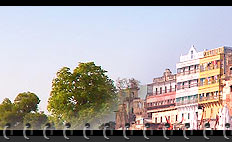History of India
Indian History is as old as the History of Mankind. Artifacts dating back
to as much as 500, 000 years have been found. India's history and culture is
ancient and dynamic, spanning back to the beginning of human civilization.
Beginning with a mysterious culture along the Indus River and in farming
communities in the southern lands of India. The history of India is one
punctuated by constant integration with migrating peoples and with the
diverse cultures that surround India. Placed in the center of Asia, history
in India is a crossroads of cultures from China to Europe, and the most
significant Asian connection with the cultures of Africa.
India's history is more than just a set of unique developments in a
definable process; it is, in many ways, a microcosm of human history itself,
a diversity of cultures all impinging on a great people and being reforged
into new, syncretic forms. Shown below is the India timeline starting from
3000 BC of ancient Indus valley civilization and Harappa civilization to
1000 AD of Chola Dynasty of ancient history of India.
Indian History in Short :
The History of India begins with the birth of the Indus Valley Civilization
in such sites as Mohenjo-Daro, Harappa, and Lothal, and the coming of the
Aryans. These two phases are usually described as the pre-Vedic and Vedic
periods. It is in the Vedic period that Hinduism first arose: this is the
time to which the Vedas are dated.
In the fifth century, large parts of India were united under Ashoka. He
also converted to Buddhism, and it is in his reign that Buddhism spread to
other parts of Asia. It is in the reign of the Mauryas that Hinduism took
the shape that fundamentally informs the religion down to the present day.
Successor states were more fragmented.
Islam first came to India in the eighth century, and by the 11th century
had firmly established itself in India as a political force; the North
Indian dynasties of the Lodhis, Tughlaqs, and numerous others, whose remains
are visible in Delhi and scattered elsewhere around North India, were
finally succeeded by the Mughal empire, under which India once again
achieved a large measure of political unity.
The European presence in India dates to the seventeenth century and it is
in the latter part of this century that the Mughal Empire began to
disintegrate, paving the way for regional states. In the contest for
supremacy, the English emerged 'victors', their rule marked by the conquests
at the battlefields of Plassey and Buxar.
The Rebellion of 1857-58, which sought to restore Indian supremacy, was
crushed; and with the subsequent crowning of Victoria as Empress of India,
the incorporation of India into the empire was complete. Successive
campaigns had the effect of driving the British out of India in 1947.
You can choose from among the following :





